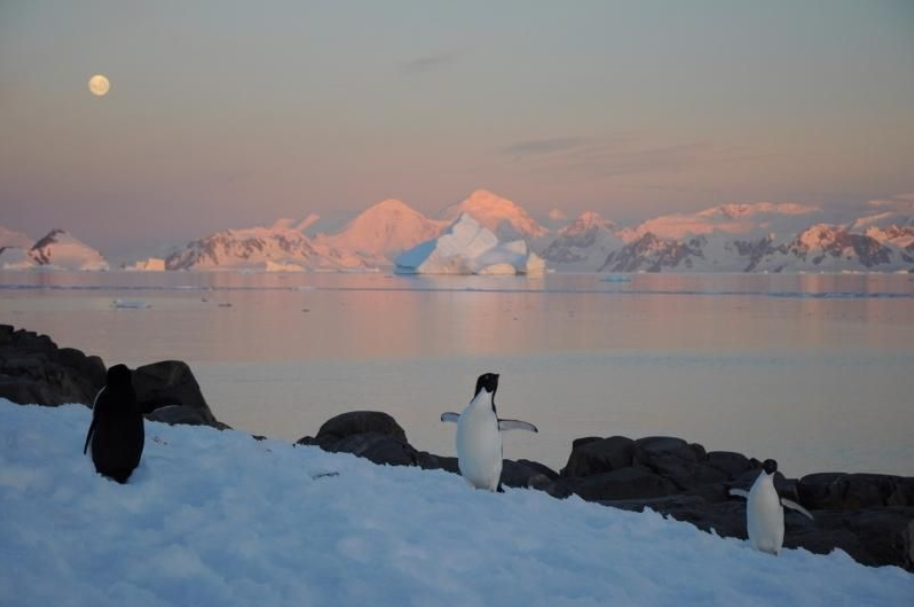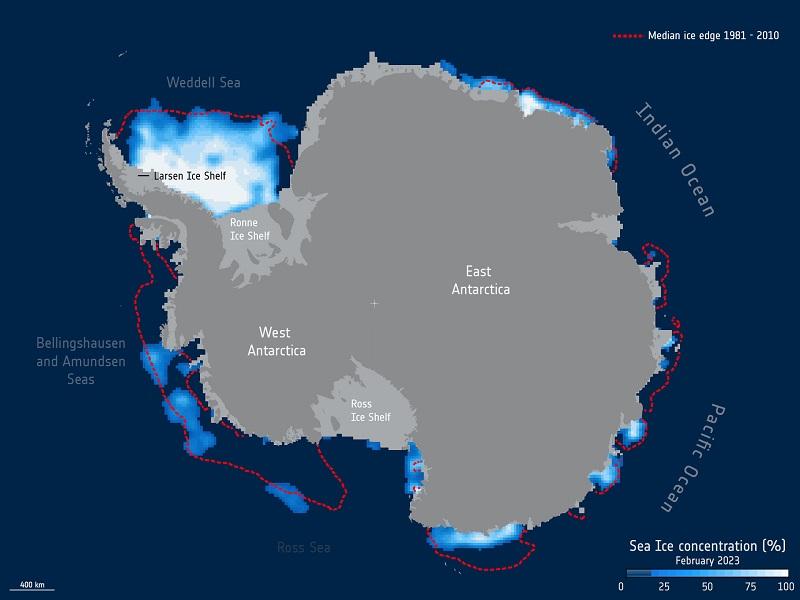‘Don’t overlook the plight of Antarctica’ say scientists

With world attention on recent wildfires and floods in North America, Europe and China, people should not overlook the devastating impact of climate change in Antarctica, scientists have warned.
Antarctica, a cold and remote continent in the southern hemisphere, is composed of “fragile and vulnerable environments” which may be subject to considerable stress and damage from a warmer climate.
In a new scientific paper, the 14 scientists – including polar expert Professor Anna Hogg from the School of Earth and Environment at the University of Leeds - review the latest scientific evidence of the changes in Antarctica, including the collapse of ice shelves, loss of sea ice, rising sea levels and extreme heatwaves.
Even if the world sticks to the 1.5-degree Celsius average rise in global temperatures agreed at the Paris climate talks in 2015, Antarctica is likely to continue to experience significant climate-driven changes.
The scientists call on governments that have signed the international treaties designed to protect Antarctica to ensure the agreements are robust enough to “provide the maximum chance that Antarctic ecosystems and species will be able to persist into the future”.
Professor Hogg, who is an expert in monitoring the polar regions using satellites, said: “The world must not forget that Antarctica has also been affected by extreme weather. It may be a remote region, but it is still impacted by a global climate system that is getting warmer.
“Antarctica - with its vast reservoirs of water stored as ice - plays a critical role in moderating the world’s weather systems and sea levels. As global warming interferes with that moderating role, there will be consequences for us all – and for wildlife.”
The paper “Antarctic Extreme Events” is published in the scientific journal Frontiers in Environmental Science. It attempts to explain the reason for extreme weather events. In many cases, climate change caused by humankind’s greenhouse gas emissions is identified as a contributing factor.
The examples of the effects extreme weather events can have in Antarctica include:
Sea ice
Sea ice is caused when the ocean freezes over. The ice forms a physical cap on the surface of the sea that limits heat and gas exchange between the sea and the atmosphere and reduces ocean flow and mixing – stabilising salinity in the oceans.
This provides a stable habitat for species that live in the oceans.
Since the late 1970s, when satellites began to monitor sea ice levels, the sea ice has undergone gradual but uneven increases, reaching a high in 2014. Later observations show the ice levels have retreated with 2022 and 2023 setting new records for low levels of ice.
The scientists ask if the world is entering a period of declining Antarctic sea ice, which raises the possibility that this might result in “enhanced global warming” as the ability of the ice to reflect solar radiation is lost.

Decline of sea ice from around the coast of Antarctica. The dotted red line shows where – on average – the edge of the sea ice was during 1981 – 2010.
Ice shelves
Ice shelves fringe three-quarters of Antarctica's coastline. They float on the sea but are connected to the glaciers on land. As such, they act as a buttress on the glacier, preventing the glacier from flowing into the sea. They act like a giant plug.
Over the last five decades, scientists have recorded a decline in ice shelves.
Writing in the paper, they note: “Since 2009, major iceberg calving events (where giant chunks of ice breaks from the ice shelf and fall into the sea) have occurred across the continent on ten Antarctic ice shelves, including the Larsen-C, Wordie and Wilkins Ice Shelves on the Peninsula, Thwaites and Pine Island Glaciers in West Antarctica, and Nansen, Mertz, Brunt, Amery and Conger Ice Shelves in East Antarctica.”
Extreme atmospheric conditions create conditions that intensify ocean swell, and the scientists note that could have a role in triggering iceberg calving.
Some iceberg calving is part of the natural ebb and flow of the ice mass, but it can take decades for ice that has been lost to regrow. The scientists say it is important to disentangle events that are naturally occurring and those linked to climate change caused by fossil fuel burning.
Declining ice is affecting wildlife. Between 2018 and 2022, 42% of emperor penguin colonies (28 of 66 known colonies) likely experienced total or partial breeding failure due to fast ice break up in at least one year.
Weather systems
In March 2022, an extreme heatwave hit East Antarctica with temperatures 38.5 degrees Celsius above the mean average on a continent that is one of the coldest places on Earth.
It meant temperatures went from around –50 degrees Celsius to –10 degrees Celsius.
The warm weather was caused by an “atmospheric river” - a column of condensed water vapour that flows in the atmosphere. In this case, the atmospheric river carried heat and moisture from the subtropics directly into the heart of Antarctica.
There has not been any scientific assessment or attribution of what caused the heatwave in 2022. But an investigation into what might have caused an earlier heatwave, in 2020, where the temperature at the Esperanza research station reached 18.3 degrees Celsius found that global warming caused by fossil fuel burning was likely a significant contributor.
The scientists say urgent studies are needed to assess whether heatwaves could affect areas where there are highly fragile ice shelves.
“Antarctic change has global implications,” said lead author Professor Martin Siegert, from the University of Exeter.
“Reducing greenhouse gas emissions to net zero is our best hope of preserving Antarctica, and this must matter to every country – and individual – on the planet.”
Extreme events can also affect biodiversity. For example, high temperatures have been linked to years with lower numbers of krill, a small crustacean, leading to breeding failures of krill-reliant predators, evidenced by many dead fur seal pups on beaches.
Professor Siegert said the rapid changes now happening in Antarctica could place many countries in breach of an international treaty. “Signatories to the Antarctic Treaty – including the UK, USA, India and China - pledge to preserve the environment of this remote and fragile place,” he said.
“Nations must understand that by continuing to explore, extract and burn fossil fuels anywhere in the world, the environment of Antarctica will become ever more affected in ways inconsistent with their pledge.”
For more information
Further details are available from David Lewis in the press office at the University of Leeds.
Top picture: Penguins and a seal on Antarctic ice. Courtesy of Professor Anna Hogg, University of Leeds
